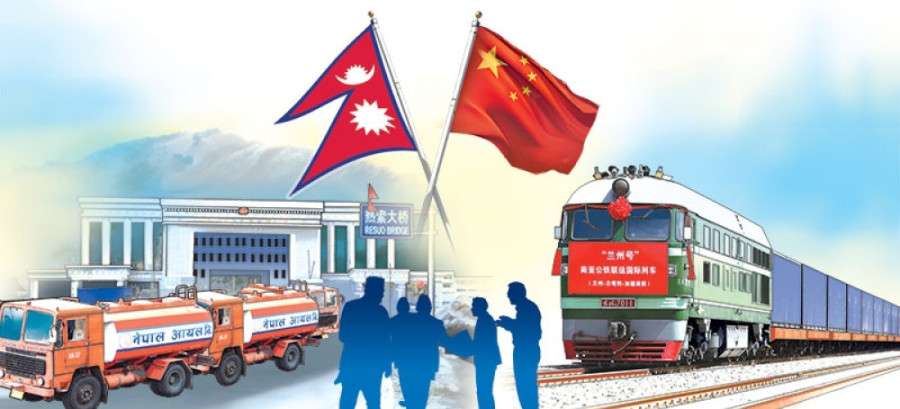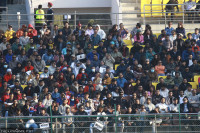Columns
Belt, road and roundabout
China’s statement that Pokhara airport is under the BRI has legitimate justifications.
Semanta Dahal
When Chinese Ambassador to Nepal Chen Song proclaimed that Pokhara International Airport was a Belt and Road Initiative (BRI) project during its inaugural and also at the function marking the first flight from China, Nepali officials were caught off-guard by the declaration. The embarrassment was evident when Foreign Minister NP Saud scrambled to refute the Chinese claim. Speaking in Parliament late last month, he said that China and Nepal were still discussing how BRI projects would be implemented, and that Nepal had not executed a single one. That certainly was not a convincing explanation against the assertiveness of the Chinese claim. Considering these conflicting perspectives, perhaps a deep scrutiny of the legal arrangement of the BRI and its practice will help to unravel the confusion.
Over the course of the 10-year period since the mega initiative was first announced by Chinese President Xi Jinping, it has adopted several names, including Silk Road Economic Belt and One Belt One Road Initiative, before settling on the better known Belt and Road Initiative. By June 2023, according to the Chinese government’s BRI portal, the BRI had expanded to 152 countries and 32 international organisations under a centralised network of more than 200 cooperation documents. These 200 cooperation documents consist of joint statements, joint communiqués and project specific contracts with a majority of the arrangements being bilateral memorandums of understanding (MoUs). Nepal’s engagement in the BRI also falls under the category of MoU which was concluded in 2017.
These MoUs possess certain typical characteristics and a common drafting structure. Amongst the characteristics, the arrangement focused on bilateralism is the most glaring. Although the BRI aims for mega-regional cooperation, it strives to achieve that goal through a network of bilateral government-to-government cooperation, giving less consideration to a multilateral framework. The MoU is also designed as a prelude to deepening the engagement in more specific transactions, financing agreements and other activities envisaged for cooperation.
The BRI MoUs
As far as the matters covered by the BRI MoUs are concerned, some common features are discernible, but they are not homogenous. The provisions in the MoUs are grouped under the following seven headings: (i) Preamble/Recitals, (ii) Objectives of Cooperation and Guiding Principles, (iii) Areas of Cooperation, (iv) Modes of Cooperation, (v) Settlement of Differences, (vi) Legal Status of Agreement, and (vii) Commencement and Termination.
The provisions are very general in nature, with a restraining stance not to elevate the MoU to the status of a treaty or international agreement. Most MoUs contain explicit provisions to emphasise their non-binding nature.
Take, for instance, the China-Italy BRI MoU which states, “No provision of this Memorandum is to be understood and performed as a legal or financial obligation or commitment of the Parties.” And the China-Philippines BRI MoU which states, “[The MoU] does not create legally binding obligations for the Participants.” The non-mandatory style of the wording renders the MoU as expressions of political and economic will for setting out operation arrangements. However, the lack of strict legal enforceability does not wither the weight of the legal significance it carries.
There are special advantages of placing reliance on quasi-legal instruments such as the BRI-type MoU. It lends legitimacy to the arrangement and facilitates compromises. It also reduces negotiation time and transaction costs, alluring states to get on board the initiative. More importantly, it fosters dynamic cooperation to adjust to changing priorities and focus or any exigencies caused by internal circumstances in China or external factors.
The Nepal MoU
Notably, in contrast to other prevalent BRI MoUs, the China-Nepal BRI MoU does not contain neither a “legal status” clause nor a “non-binding” statement. This raises the question whether failure to abide by the MoU constitutes breach of a legal obligation or not. While the answer to the question is not straightforward, not respecting China’s “core interests and major concerns” could plausibly be considered as non-observance of the MoU.
The minimum legalisation element inherent in BRI MoUs allows for flexibility both in their interpretation and execution. The BRI MoUs, including the one Nepal has signed, refute the popular assumption that the BRI is only an ambitious programme for financing large-scale infrastructure ventures. The consensus reached between Nepal and China in the BRI MoU is to inject vigour in economic and social development, and strengthen connectivity through policy exchanges, facility connectivity, trade connectivity and people connectivity. The facility connectivity involves cross-border projects including civil aviation, and people connectivity includes people exchanges and tourism. Connectivity is the core of the MoU, not infrastructure finance. Further, the financing agreement with China Exim Bank for Pokhara International Airport was signed after China launched the BRI. Hence, the statement by China that Pokhara International Airport is under the BRI has several legitimate justifications.
The BRI today stands at a roundabout where a network of bilateral partnerships meets a multilateral global framework. It is a bilateral arrangement which ostensibly aims to establish a multilateral regime. In realising this aim, it remains to be seen if it preserves, challenges or reshapes the prevailing international legal order. In Nepal’s case, despite the warm reception the BRI received, its implementation has not been steady. Moving beyond debt financing of large infrastructure projects, the focus can shift to improving the investment climate for Chinese foreign direct investment and removing barriers, both physical and administrative, for unimpeded trade. If the right investment decisions are not taken, not only the borrower but also the financier will be exposed to credit risk. In short, it is time to buckle up!




 11.12°C Kathmandu
11.12°C Kathmandu













%20(1).jpg&w=300&height=200)

